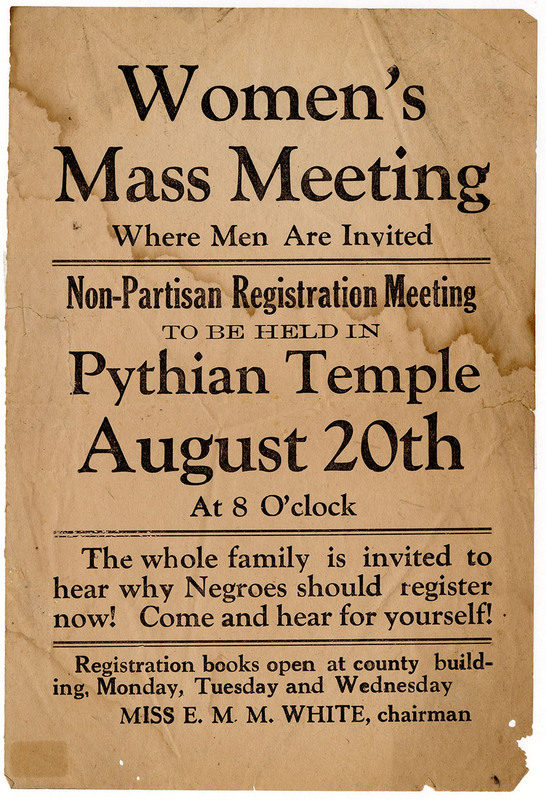Demanding Change: Black Women in Political Movements
Activists complimented their pragmatic maneuvering within the white political spaces with more radical political action. Black women activists used the underestimation of their capabilities in being a threat to white supremacy to directly agitate against the discrimination and violence which forcefully subordinated them and their families in American society.
The 1920 Florida Voting Rights Movement
After the ratification of the 19th Amendment, black women had won the right to vote alongside their white counterparts. In organizations like the NACW and alone as individual public figures, black women activists had fought for years for suffrage and equality at the ballot box. In what became known as the 1920 Florida Voting Rights Movement, the black women of Florida demonstrated the potential of their newly-won power as voters. The movement sought to break the dominance of one-party politics within the state by voting for Republican candidates like presidential candidate Warren G. Harding, even when local Republican leaders openly discouraged their support. With masses of black voters appearing at the polls, they could prove their electoral importance despite restrictive voting laws and influence the Republicans to act in their interests which had been long ignored. If political organizations like the National League of Republican Colored Women worked for the party, the Voting Rights Movement aimed to pressure it into changing its policies in Florida from the outside.
While the movements’ beginnings were rooted in meetings led by black men, black women soon began taking dominant roles in the shaping of the movement. They registered to vote, managed their households’ finances to save enough to pay poll taxes, and encouraged their husbands and other family members to vote with them. Mary McLeod Bethune led the voting drives in Daytona with members of her Bethune-Cookman College. In Jacksonville, Eartha M. M. White organized women through educational mass meetings in which the primary audience was women who were also encouraged to bring their husbands, so they could both learn how to vote. These meetings provided information on voter registration to black women who had never been able to participate in an election previously. As a result, masses of black women registered to vote in cities around Florida, outnumbering their white counterparts. Their registration inspired black men to follow their example, leading to a large increase in registration amongst black Floridians. This movement signaled to the state that black Floridians were committed to voting and making change, with women spearheading the movement.
Despite their best efforts, the 1920 Florida Voting Rights Movement failed to gain momentum in most Florida counties. Stricter voting restrictions, poorly run polling stations for black voters, and outright violent terror suppressed actual election day attendance in most counties. In cities like Jacksonville and Daytona, black voters faced long lines, harassment, and malicious administration of literacy tests. White famously encouraged those waiting in line, providing them with lemonade and de-escalating tensions when local white people harassed them. In Ocoee, Florida, local KKK groups led a campaign of violence, killing dozens of the local black population after some had attempted to vote. The entire African American population was driven out of the town as a result. Compared to their registration numbers, few black Floridians were ultimately able to vote in the 1920 elections. Local governments, citizens, and terrorist groups had worked together to thwart the electoral movement, but they could not deter the black women of Florida in the struggle for equality.

